Bioselfies
Using your bacteria to make living artworks
We want to get people talking about their microbes! So we ask people to sample their own bacteria and use them as a biological paint to draw a picture on an agar plate. Our team incubates these artworks in our lab to see what gorgeous creatures you house! Well, the results are in, and we can confirm that your bacteria are gorgeous!
Bioselfies: The Concept
Our bodies are home to trillions of bacteria. In our guts, they help us to digest food, adsorb nutrients and fight disease. But there are also 100’s of different microorganisms in our mouths, some can cause tooth decay, but others work together and fight disease-causing bacteria. Bacteria are also abundant on your skin (especially the warm, moist regions). Skin microbes can produce antimicrobial compounds and prevent disease causing bacteria from taking over. The microorganisms that inhabit our healthy bodies are collectively known as “The Microbiome”.
We designed the bioselfies activity because we wanted to help you get to know your own microbiome. We take selfies every day, but they don’t show up the trillions of other organisms that make you, you! There are at least 3 bacterial cells for every cell in your body …. you are definitely NOT 100% human.
Our Bioselfies Activity
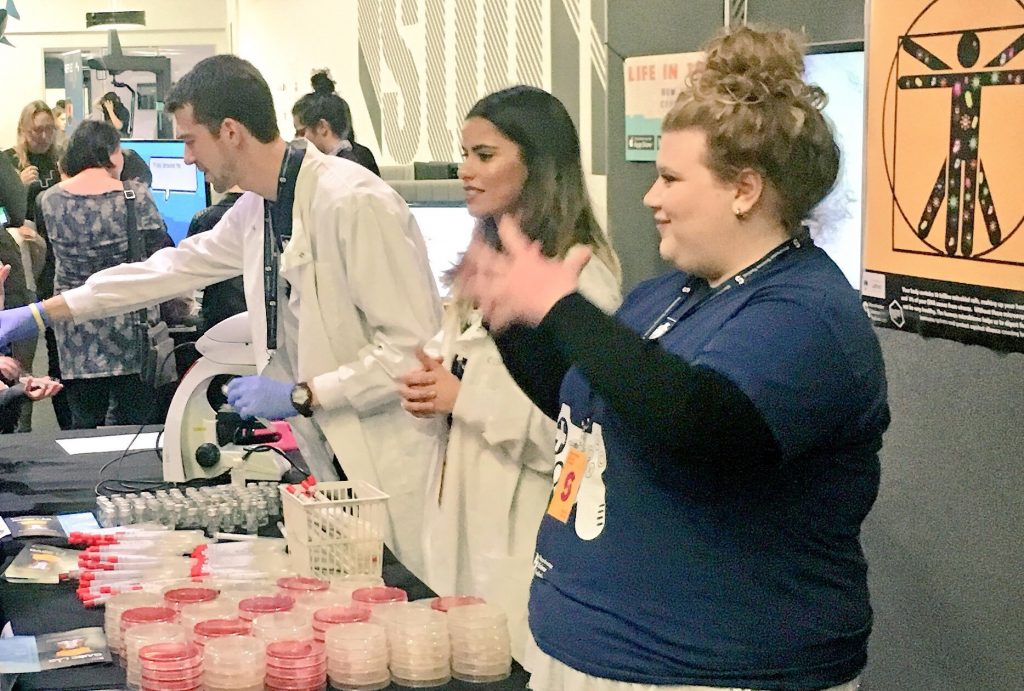
This activity invites you to sample your own microbiome using a sterile swab (like those used by your GP when you have a sore throat). But we want to sample the microbes that keep your mouth and skin healthy!
This swab is your paintbrush; the bacteria / fungi are like invisible paint and your canvas is an agar plate!
How to Create Your Bioselfie
- Pop the swab in your mouth and use it like a toothbrush on your teeth and gums.
- Next, roll the swab behind your ear (we find that this is a great place to find bacteria, because people often forget to wash behind their ears!).
- Pick a plate and use your swab like a paint brush to paint anything you like on the surface – a smiley face, a heart, a spring flower? Maybe you want to write your initials or a secret message? But not too secret, because all will be revealed when the microorganisms grow!
- We incubate the plates for a few days in our dedicated microbiology labs, where your microbes will grow to reveal your bioselfie.
Bioselfies Results Revealed
See our results page to browse 100s of bioselfies – each one is unique, because it was drawn with the microbes that each artist sampled from their own bodies.
How Bioselfies Work
The agar is like a 5 star spa hotel for some types of bacteria. We use these a lot in microbiology practicals at Salford. For bioselfies events, we usually use 2 different types of agar:
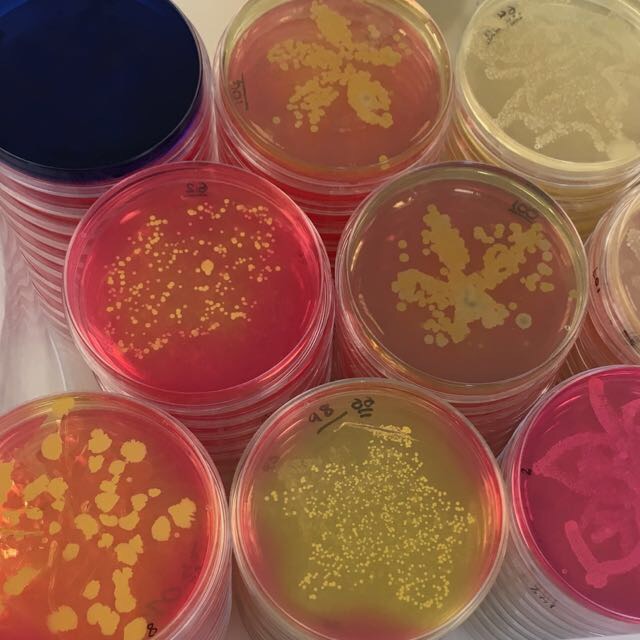
Nutrient agar is plain in colour and contains all the nutrients that many bacteria / fungi need to grow. Lots of bacteria naturally produce colourful pigments that can sometimes be toxic to other microorganisms and used as antimicrobials.
Mannitol Salt agar contains a high concentration of salt, which will prevent most bacteria / fungi from growing. But, common inhabitants of the skin love salty environments and will happily grow here. The agar also contains a sugar called mannitol and a pH indicator called phenol red, which gives it this gorgeous pink colour. This agar helps clinical microbiologists to distinguish between some different bacterial species, which can be important when deciding on treatment: Staphylococcus aureus can cause wound, lung and gut infections – it can ferment the mannitol sugar and convert it into energy – this produces acid – which converts the pH indicator to a yellow colour. Staphylococcus epidermidis also loves on the skin but is less commonly associated with disease. It appears pink when it grows on the plate.
Watch Bacterial Artwork Grow
Click here to see a brilliant technician collaboration by Nicky Morgan (Microbiology) and Jack Turner (Digital media) created for MICROBIhOME at Manchester Science Festival 2019
Last year, we were called upon to use our Microbial Art expertise for a special reveal of a Blue Peter a competition winner. Read about it here
Natural Microbial Colour Palette:
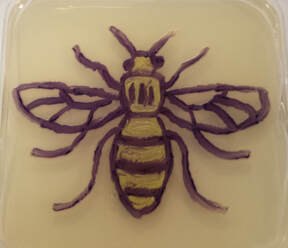
Manchester Bee – by Nicky Morgan 
Logo – by Nicky Morgan
These live artworks use bacteria that produce their own natural pigments:
Yellow: Micrococcus luteus (A bacterium that lives in soil and water, but also on the skin and in the mouth of humans and other mammals)
Red: Serratia marscesens (a bacterium that is able to grow in many different environments – often appearing as a pink growth between bathroom tiles. This bacterium also causes healthcare associated infections).
Purple: Chromobacterium violaceum (a bacterium found in water and soil of tropical and sub-tropical regions of the world. The pigment is a natural antibiotic that the bacterium produces called violacein).
Some of Our Favorites From The Latest Event at The Royal Society:
Read a blog about our trip here
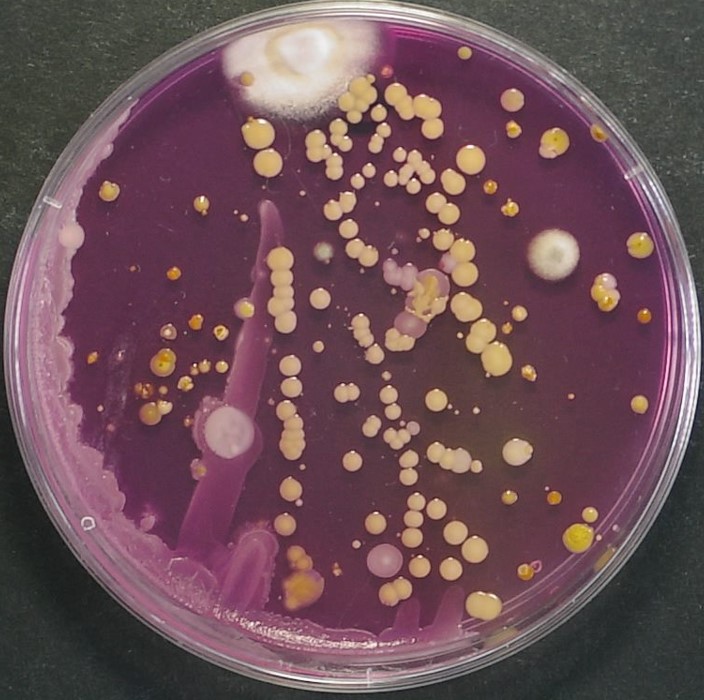
Diverse Universe 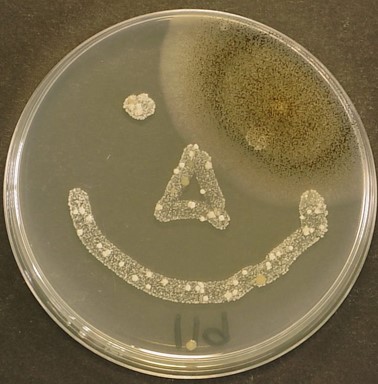
FungEYE 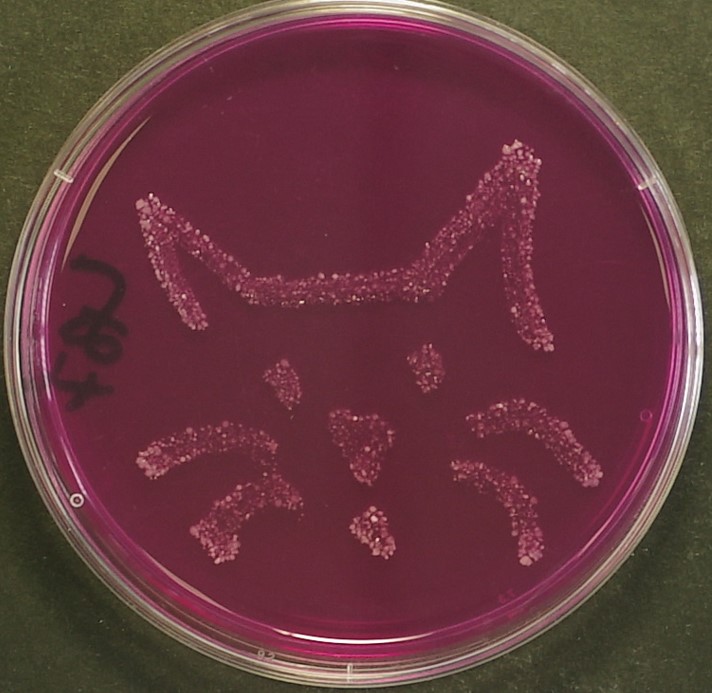
Cat Meowcrobes 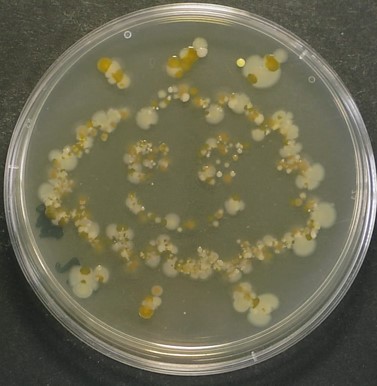
Bacterial Cloud 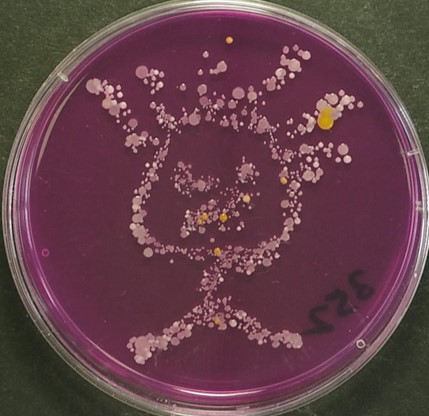
Punk bacteria 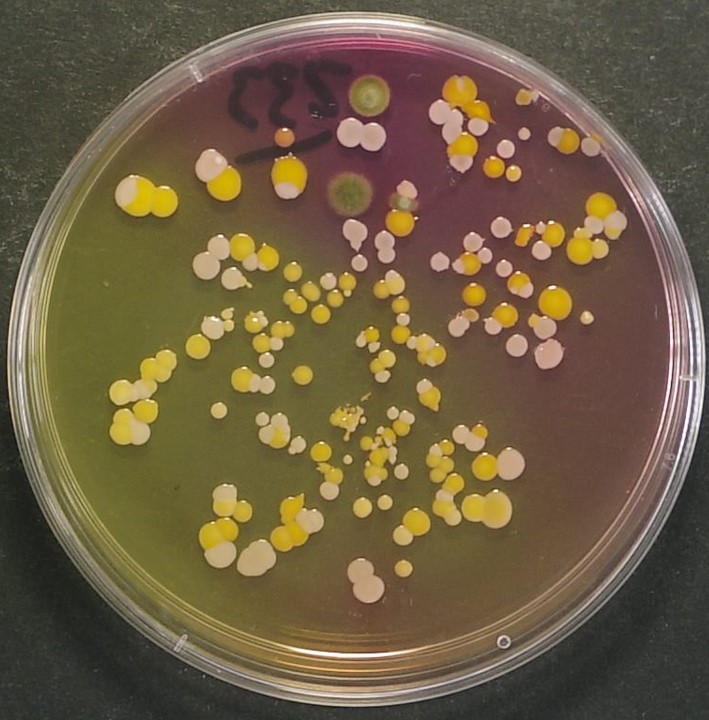
TwoTone 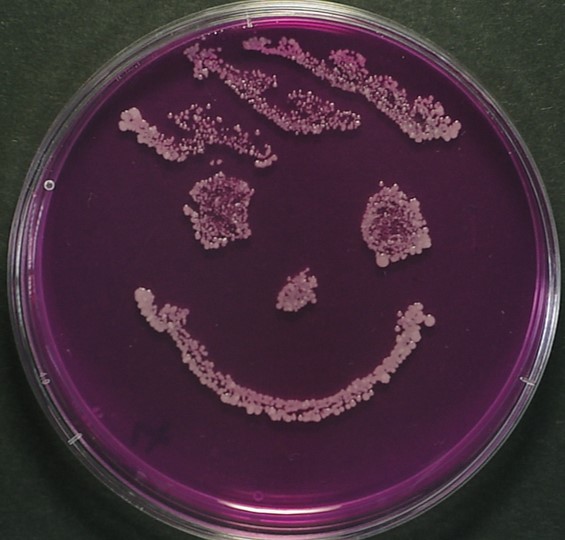
Smiler 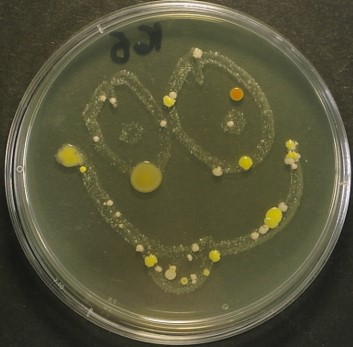
Goofy 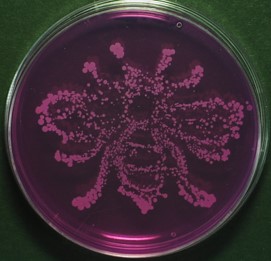
Buzzing Microbes 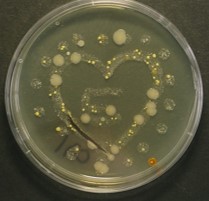
LoveBioselfies 
Mixing it UP microbe Style 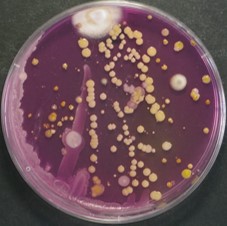
Microbial colour palette 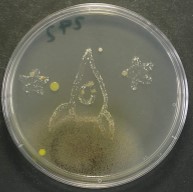
Fungi fuelled rocket! 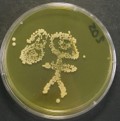
Science Girl